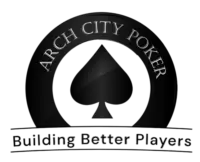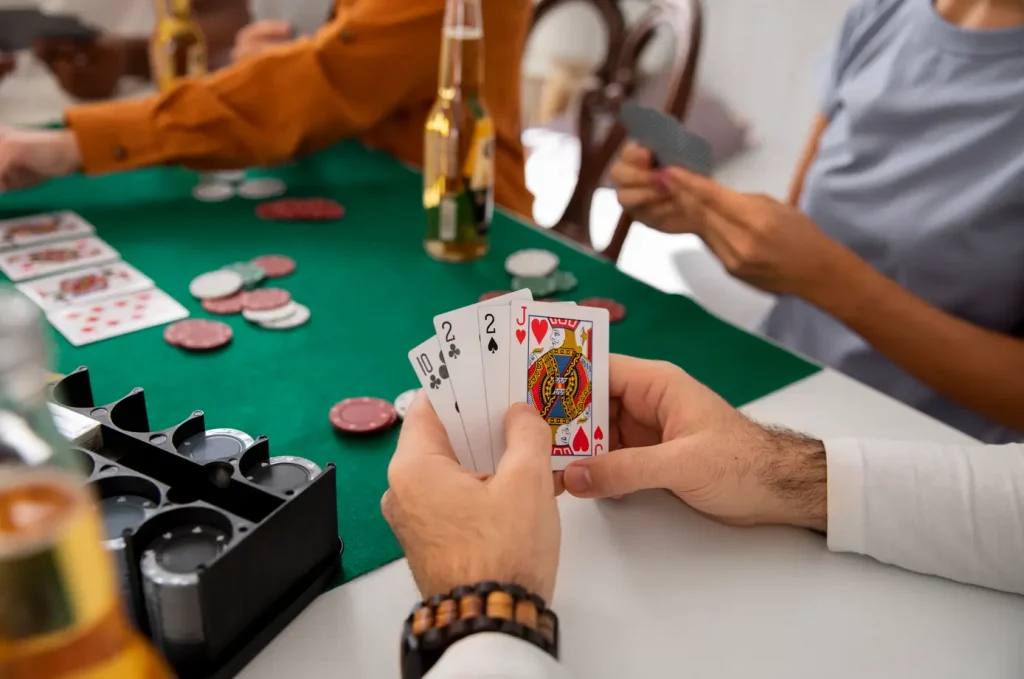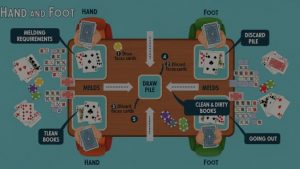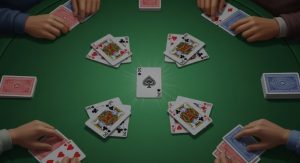Selecting the right poker training program requires careful evaluation of your current skill level, learning preferences, time availability, and specific poker goals. The most effective programs align with student objectives while providing structured learning paths that accommodate individual needs and circumstances.
Assessing Your Current Skill Level & Goals
Before choosing any poker training program, players must honestly evaluate their current abilities and define clear objectives for improvement. This assessment determines which programs offer appropriate content difficulty and learning progression for maximum benefit.
Different programs serve different skill ranges, from complete beginners learning basic rules to experienced players refining advanced concepts. Matching your current level with program offerings prevents frustration from content that is either too basic or overly complicated.
Beginner Player Considerations
Beginner players need poker training programs that start with fundamental concepts like hand rankings, position importance, and basic betting patterns. These programs should provide clear explanations of poker terminology and game mechanics before progressing to strategic concepts.
The most effective beginner programs offer step-by-step learning progressions that build knowledge systematically. Students benefit from programs that include practice exercises and interactive elements that reinforce basic concepts before moving to more advanced material.
Intermediate Player Requirements
Intermediate players possess basic poker knowledge but need training programs that address leaks in their games while introducing more advanced strategic concepts. These programs should focus on specific skill development rather than covering elementary material.
Effective intermediate training emphasizes hand reading, bet sizing, position play, and opponent exploitation techniques. The best programs provide extensive hand analysis that demonstrates how theoretical concepts apply in practical game situations.
Advanced Player Needs
Advanced players require poker training programs that explore cutting-edge strategies, game theory applications, and population tendency analysis. These programs often focus on specific situations or advanced concepts rather than providing broad overviews.
Advanced training typically includes solver analysis, mixed strategy implementation, and exploitation techniques that require solid foundational knowledge. The most effective programs assume students understand basic concepts and focus on refinement and optimization.
Evaluating Program Structure & Content Delivery
Training program structure significantly impacts learning effectiveness and student satisfaction. Well-organized programs provide clear learning paths while allowing flexibility for students to focus on specific areas of interest or weakness.
The best poker training programs organize content logically while providing multiple ways to access information. This organization helps students find relevant material quickly while ensuring coverage of important topics.
Learning Management System Features
Modern poker training programs utilize learning management systems that track progress, recommend content, and organize materials efficiently. These systems should provide intuitive dealing of personalized learning experiences that adapt to student needs.
Effective learning management systems allow students to create custom libraries, bookmark important content, and track completion of various modules. The best programs provide search functionality and content categorization that helps students find specific information quickly.
Video Quality & Production Values
High-quality video production increases learning quality by providing clear visual and audio information that keeps students engaged. Poor production quality can distract from educational content and reduce learning effectiveness.
The most effective poker training programs invest in professional video production that includes clear graphics, multiple camera angles, and high-quality audio. These production values demonstrate program commitment to student experience while facilitating better learning outcomes.
Content Update Frequency
Poker strategy evolves continuously, requiring training programs to update content regularly to remain relevant and effective. Programs that rely on outdated material may teach strategies that no longer work in current game environments.
The best poker training programs add new content weekly or monthly while updating existing materials to reflect current strategic thinking. This ongoing development ensures students learn current strategies while staying ahead of evolving game conditions.
Instructor Credentials & Teaching Experience
Instructor quality significantly impacts training program effectiveness, making credential evaluation essential when choosing educational options. The most qualified instructors combine strong playing results with proven teaching abilities and communication skills.
Effective poker instructors understand common learning challenges and can explain complicated concepts in accessible ways. They provide practical examples and real-world applications that help students implement theoretical knowledge successfully.
Playing Accomplishments & Results
Strong playing results demonstrate instructor competence while providing credibility that boosts student confidence in the educational content. However, playing ability alone does not guarantee teaching effectiveness.
The most effective instructors combine solid playing results with extensive coaching experience. They understand how to translate their knowledge into teachable concepts that students can understand and implement successfully.
Teaching Experience & Student Success
Extensive teaching experience indicates instructor ability to communicate effectively and help students improve their games. Instructors who have worked with many students understand common learning challenges and can provide targeted assistance.
The best poker training programs feature instructors who have helped hundreds of students improve their results. These instructors understand different learning styles while providing proven methods for skill development and improvement.
Communication Style & Approach
Instructor communication style affects student learning and program satisfaction. Some students prefer detailed theoretical explanations while others benefit from practical examples and simplified presentations.
Effective poker training programs provide sample content that allows prospective students to evaluate instructor communication styles before committing to full programs. This preview helps ensure compatibility between student learning preferences and instructor teaching approaches.
Program Pricing & Value Considerations
Training program costs vary significantly, from free resources to expensive individual coaching arrangements. Students must evaluate program value relative to their budgets while considering possible return on investment from improved play.
The most cost-effective programs provide substantial content and ongoing support at reasonable prices. These programs often offer better value than expensive individual coaching while delivering comparable educational benefits.
Monthly Membership vs One-Time Purchases
Some programs operate on monthly membership models while others require one-time purchases for lifetime access. Each model offers distinct advantages depending on student learning preferences and commitment levels.
Monthly memberships provide ongoing access to new content and community features while allowing students to cancel when they complete their learning objectives. One-time purchases may offer better long-term value for students planning extended study periods.
Additional Costs & Hidden Fees
Some poker training programs include additional costs for premium features, individual coaching sessions, or supplementary materials. Students should understand all the possible costs before enrolling to avoid unexpected expenses.
The most transparent programs clearly outline all costs upfront while providing detailed information about included features and optional additions. This clarity helps students make informed decisions about program value and affordability.
Community & Support Features
Learning communities amp up the training effectiveness by providing peer support, strategy discussions, and networking opportunities. These features can significantly impact student success and program satisfaction.
The best poker training programs foster active communities that encourage interaction between students while providing ongoing support throughout the learning process. These communities often become valuable resources that extend beyond formal training periods.
Forum Access & Peer Interaction
Active forums allow students to discuss strategies, share hand histories, and ask questions about complicated situations. These discussions provide varied perspectives while reinforcing learning through teaching others.
Effective training communities maintain high-quality discussions through moderation and expert participation. The best programs encourage thoughtful analysis while discouraging low-quality posts that detract from educational value.
Coaching Support & Feedback
Some programs include coaching support as part of their offerings while others charge additional fees for individual attention. Students should understand available support levels when evaluating different training options.
The most valuable programs provide multiple support channels including forums, email assistance, and scheduled coaching sessions. This support ensures students receive help when needed while maximizing learning effectiveness.
Choosing the right poker training program requires careful evaluation of multiple factors including content quality, instructor credentials, pricing, and support features. Students who invest time in this selection process are more likely to find programs that accelerate their improvement while providing lasting value for their poker education.





